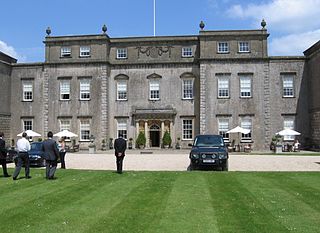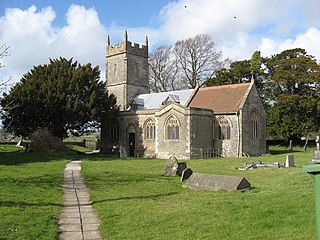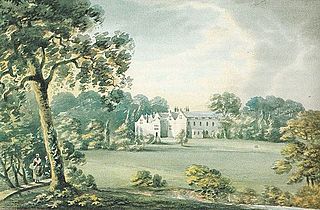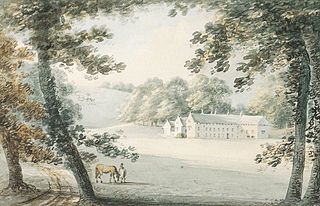
Henry Hippisley Coxe (1748-1795) of Ston Easton Park, Somerset, was MP for Somerset (1792-5). [3]

Henry Hippisley Coxe (1748-1795) of Ston Easton Park, Somerset, was MP for Somerset (1792-5). [3]
He was the 3rd son of John Hippisley Coxe (1715-1769), builder of the mansion house Ston Easton Park, by his wife Mary Northleigh, daughter and eventual sole-heiress of Stephen Northleigh, MP, of Peamore, Exminster, and of Matford, Alphington, Devon.
In 1786 he became heir to Ston Easton Park and other estates on the death of his elder brother Richard Hippisley Coxe (1742-1786), MP. [4]
He served in the Somerset Militia, as Lieutenant in 1778, Captain in 1782 and Major in 1795. He was Sheriff of Somerset 1789-90 and MP for Somerset (1792-5). [5]
He was President of the Bath and Wells Club from 1790 to 1791. [6]
He married twice: [7]
He died without progeny on 1 August 1795, and left his estates to his widow Elizabeth Anne Horner for life, with remainder to his nephew Rev. Henry Hippisley, 2nd son of his sister Margaret Hippisley Coxe by her husband Rev. John Hippisley (1735-1822) of Lambourne Place, Berkshire. [9]

Ston Easton Park is an English country house built in the 18th century. It lies near the village of Ston Easton, Somerset. It is a Grade I listed building and the grounds are listed Grade II on the Register of Historic Parks and Gardens.

Ston Easton is a linear village and civil parish in the English county of Somerset. It is 14 miles (23 km) southwest of Bath and 7 miles (11 km) north of Shepton Mallet. It forms part of the Mendip district and lies along the A37 road 11 miles (18 km) south of the cities of Bristol and Bath and to the west of the town of Midsomer Norton. The parish includes the hamlet of Clapton.
Sir John Coxe Hippisley, 1st Baronet, was a British diplomat and politician who pursued an 'unflagging, though wholly unsuccessful, quest for office' which led King George III of Great Britain to describe him as 'that busy man' and 'the grand intriguer'.
Henry Cox (1832–?) was a member of the Virginia House of Delegates in the 1870s.
John Hippisley (1530–1570) was an English barrister and politician.

Little Fulford was a historic estate in the parishes of Shobrooke and Crediton, Devon. It briefly share ownership before 1700 with Great Fulford, in Dunsford, about 9 miles (14 km) to the south-west. The Elizabethan mansion house originally called Fulford House was first built by Sir William Peryam (1534–1604), a judge and Lord Chief Baron of the Exchequer. It acquired the diminutive epithet "Little" in about 1700 to distinguish it from Fulford House, Dunsford and was at some time after 1797 renamed Shobrooke House, to remove all remaining confusion between the two places. Peryam's mansion was demolished in 1815 and a new house erected on a different site away from the River Creedy. This new building was subsequently remodelled in 1850 in an Italianate style. It was destroyed by fire in 1945 and demolished, with only the stable block remaining today. The landscaped park survives, open on the south side to the public by permissive access, and crossed in parts by public rights of way, with ancient large trees and two sets of ornate entrance gates with a long decorative stone multiple-arched bridge over a large ornamental lake. The large pleasure garden survives, usually closed to the public, with walled kitchen garden and stone walls and balustrades of terraces. The park and gardens are Grade II listed in the National Register of Historic Parks and Gardens. The estate was the home successively of the families of Peryam, Tuckfield, Hippisley and lastly the Shelley baronets, in whose possession it remains today.

Peamore is a historic country estate in the parish of Exminster, Devon, which is near the city of Exeter. In 1810 Peamore House was described as "one of the most pleasant seats in the neighbourhood of Exeter". The house was remodelled in the early 19th century and is now a grade II listed building, set in grade II listed parkland.
Matford is an historic estate in the parish of Alphington, near Exeter, Devon. It should not be confused with Matford in the parish of Heavitree, almost immediately opposite on the other side of the River Exe.

Reverend Sir Frederic Shelley, 8th Baronet (1809–1869), of Shobrooke Park, Crediton, Devon, was a cleric and landowner.

Creedy is an historic estate in the parish of Sandford, near Crediton in Devon. It is named from its location on the west side of the River Creedy. It was the seat of the Davie family from about 1600 until the late 20th century. The mansion house on the estate has been called at various times New House, Creedy House, and as presently, Creedy Park. It was first built in about 1600, rebuilt in 1846, burnt down in 1915 and rebuilt 1916–21. It is surrounded by a large park, the boundary of which is enclosed by a stone and brick wall several miles long.

Edward Yarde (1669–1735), of Churston Court in the parish of Churston Ferrers in Devon, England, was a Member of Parliament for Totnes in Devon 1695–1698.

Stephen Northleigh (?1692-?1731), of Peamore, Exminster, Devon, was an English politician who sat in the House of Commons from 1713 to 1727.

Sharpham is an historic estate in the parish of Ashprington, Devon. The Georgian mansion house, known as Sharpham House, overlooks the River Dart and is a Grade I listed building. The house was commenced in about 1770 by the Royal Navy captain Philemon Pownoll to the designs of the architect Sir Robert Taylor (1714–1788). In the opinion of Nikolaus Pevsner it contains "one of the most spectacular and daring later 18th century staircase designs anywhere in England". The park and gardens are Grade II* listed in the National Register of Historic Parks and Gardens. Part of the descent of Sharpham is shown on the Palmes family heraldic pedigree roll.

Sir William Davie, 4th Baronet (1662–1707) of Creedy in the parish of Sandford, near Crediton in Devon, inherited the Davie baronetcy and the Davie estates from his elder brother Sir John Davie, 3rd Baronet (1660–1692), MP for Saltash 1679–85 and Sheriff of Devon in 1688, who died unmarried at the age of 32.

Gournay Court in the parish of West Harptree, Somerset, England, is a country house built circa 1600. The house, along with the manor of West Harptree, was owned by the Duchy of Cornwall. During World War I, it became a hospital. In 1928, it was bought by Sir Edward Geoffrey Hippisley-Cox. It is now the residence of the previous local Member of Parliament (MP) Sir Jacob Rees-Mogg and his family.

Painsford is an historic estate in the parish of Ashprington in Devon.

Henry Northleigh (1643–1694) of Peamore in the parish of Exminster in Devon, was the MP for Okehampton in Devon.

John Fownes (1661–1731) of Kittery Court in the parish of Kingswear and of Nethway in the parish of Brixham, both in Devon, was a British landowner and politician who sat in the House of Commons from 1714 to 1715.

Cholwell is a historic hamlet and manor in the parish of Cameley, Somerset, England. The manor house, Cholwell House, was rebuilt in 1855 by William Rees-Mogg (1815-1909). It is a Grade II listed building.
Richard Hippisley Coxe was a British politician who sat in the House of Commons from 1768 to 1784.